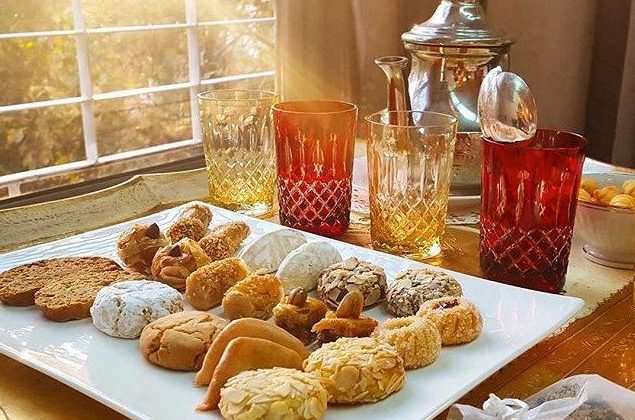
Morocco is one of the leading gastronomical destinations in the world.
With its blend of ancient and modern cuisine, the kingdom offers a unique culinary experience that is a reflection of its incredibly extensive history and rich cultural heritage.
Moroccan cuisine extends beyond its savory territory and into an abounding and delectable dessert repertoire.
Moroccan sweet creations are characterized by their refined and fragrant nature and local quality ingredients from orange blossom water, rose water, almonds, saffron, mastic and dates.
In this article, however, we pay tribute to the country’s traditional baking staples So pack your taste buds as we take a trip to Morocco’s flavor town where we discover some of its must-try sweets and get introduced to its fascinating sweet culture.
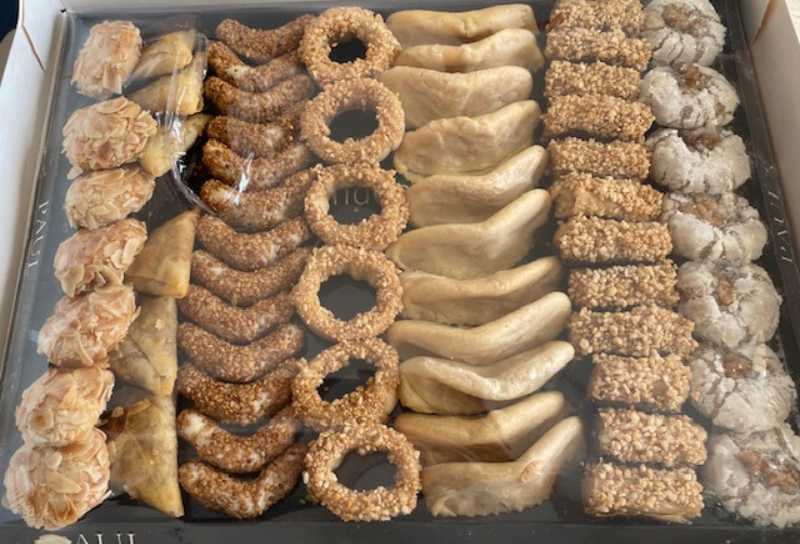
Moroccan cookies sweets and pastries
Briouat
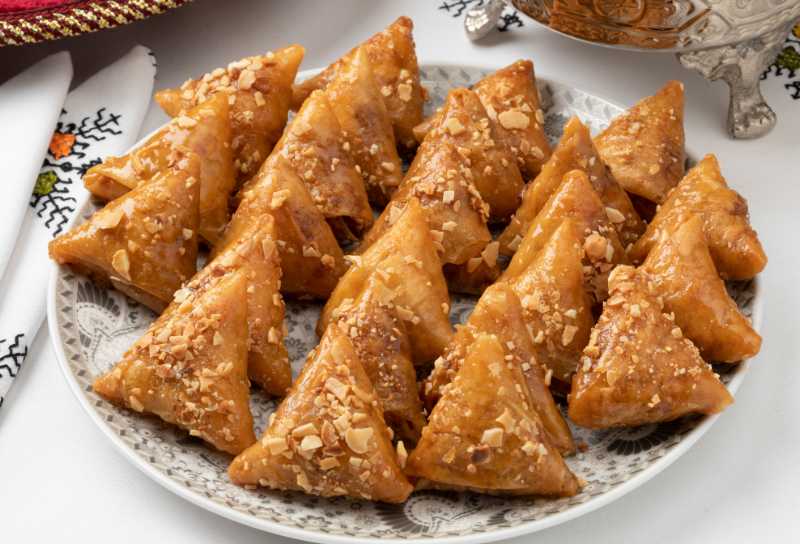
Briouat are triangle-shaped deep-fried Moroccan puff pastries. They consist of warqa dough enveloping a sweet almond or peanut filling. The whole is tossed in a mixture of honey and orange blossom water.
Sesame seeds or dried rose petals are sometimes sprinkled over them. This honey-glazed goodness is a family favorite especially in the Month of Ramadan alongside other traditional treats such as Chebakia and Sellou.
Gazzelle Hornes or Gazzelle ankle
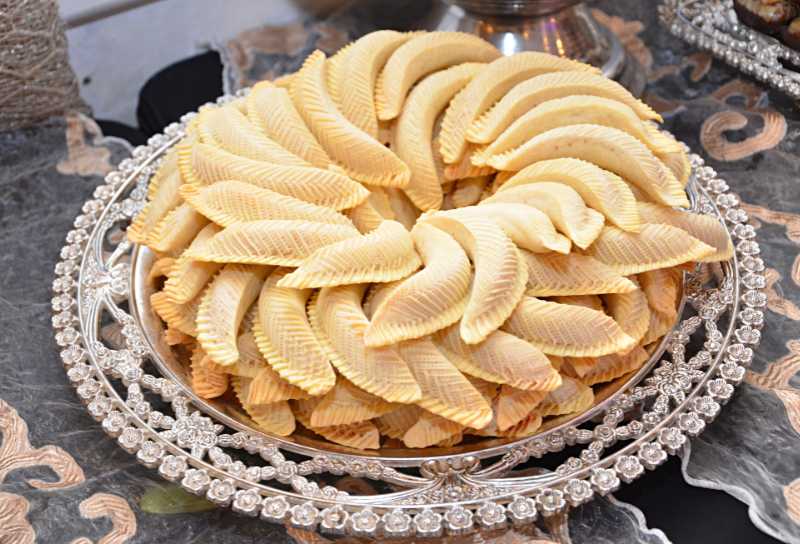
Literally translated from Moroccan Arabic to Gazelle ankles in reference to their crescent shape, these delicate cookies are a true classic in Moroccan cuisine.
The latter comprises a paper-thin delicate dough draped around an extremely almond paste flavored with orange flower water and mastic gum.
The complex preparation techniques coupled with the straightforward presentation add to the cookies’ deceptively simple nature.
Gazelle horns are the finest of what Moroccan baking has to offer, thus, reserved for special occasions.
Fekkas
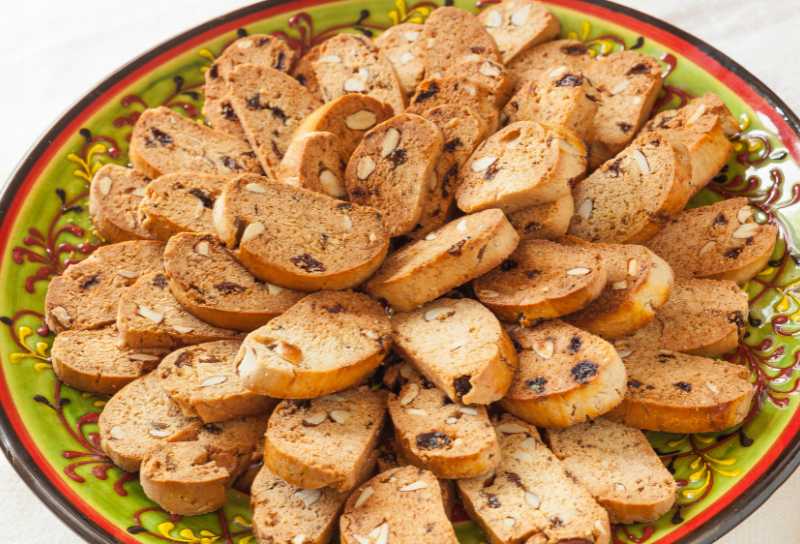
Fekkas is the twice-baked Moroccan-style biscotti. It is, first, baked as a roll of dough studded with almonds and raisings.
Then after they are diagonally cut into individual pieces, they are popped into the oven to get their golden color.
Modern variations of Fekkas substitute almonds with pistachio, hazelnuts, or a mixture of nuts. This crunchy snack is perfect for dunking in coffee or tea either on special occasions or as an everyday treat.
Chebbakia
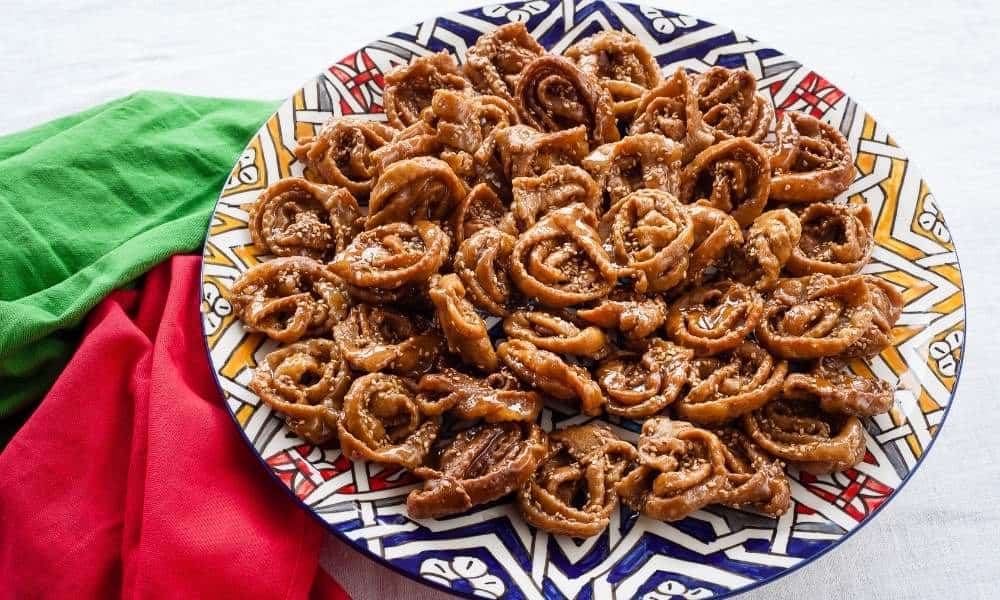
Chebbakia is a flower-shaped sesame cookie that is highly laborious but totally worth the effort. Simply put, it is made of a dough that celebrates the flavors of almond, sesame, mastic, anise, cinnamon, saffron and orange blossom water.
The consistency thereof is similar to pasta dough. The most challenging portion of the recipe is the kneading and shaping of the cookies since without the proper folding technique, the dough can get easily damaged.
After being deep-fried, Chebbakia is drizzled with honey and sprinkled with sesame seeds.
For Moroccans, this crunchy yet honey-oozing cookie is symbolic of the Holy month of Ramadan during which is it commonly sold, made and served.
Moroccan Ghriba
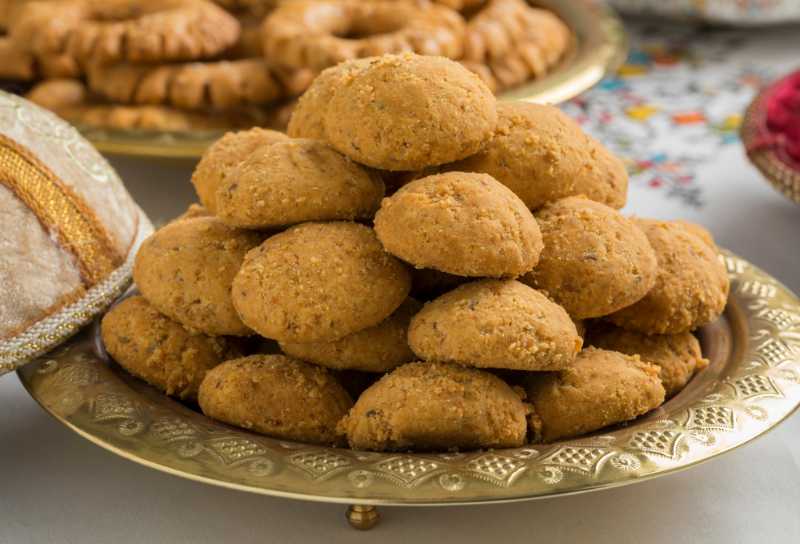
Ghriba Behla are Moroccan shortbread cookies characterized by their much-desired cracked tops which set them apart from other Moroccan cookies.
Although economical in nature, these cookies are rich in taste thanks to the whole and ground sesame seeds they contain. The cookies’ structure is complex in that they are both delicate and melt in your mouth but still offer the crunch factor.
Mhancha
Mhancha is a Meknessi almond pastry named so for its circular coiled-snake shape. Its outer crunchy layer consists of warqa pastry.
This is balanced by the smoothness of its almond filling; scented with flower water and flavored with honey. To add to its sparkly look and fragrance, Mhancha is dipped into a honey and orange blossom syrup.
Jawhara
Rightly translated to gem or jewel in Arabic, this delicious confection is also made of warqa pastry, this time as a stack of six or more sheets with cream jammed between every two layers.
The latter contains milk, powdered sugar, whipped cream, orange blossom water and ground almond. Right before serving, the pastry is drenched in an orange blossom-flavored custard.
Krachel
Originating from the cultural capital of Morocco, Fez, Crachel are Moroccan brioche or sweet bread.
Traditionally, these sapid rolls have a balanced taste so that they can be paired with a wide variety of…. What truly distinguishes them is their ambrosial aroma as they always incorporate a mixture of anise or fennel.
They are also topped with sesame seeds, according to taste, and flavored with orange blossom water.
Beghrir
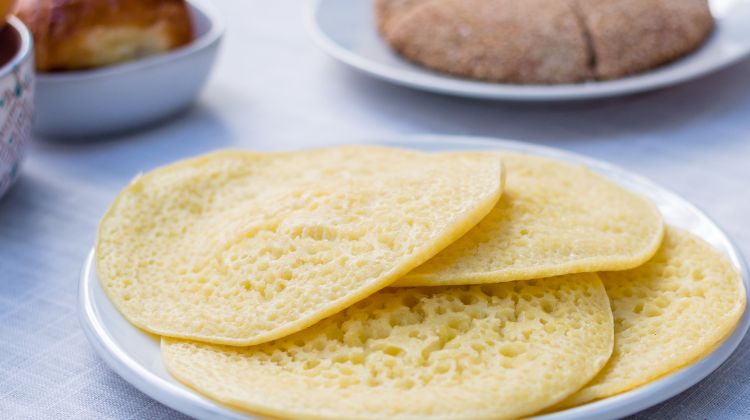
Beghrir are incredibly light and fluffy pancakes with tiny holes on top thanks to the yeast they contain. They differ from Western pancakes in that they’re made from semolina batter.
Getting them to be as light transparent and spongy as possible is a skill that Moroccan women are proud to have.
Msemen
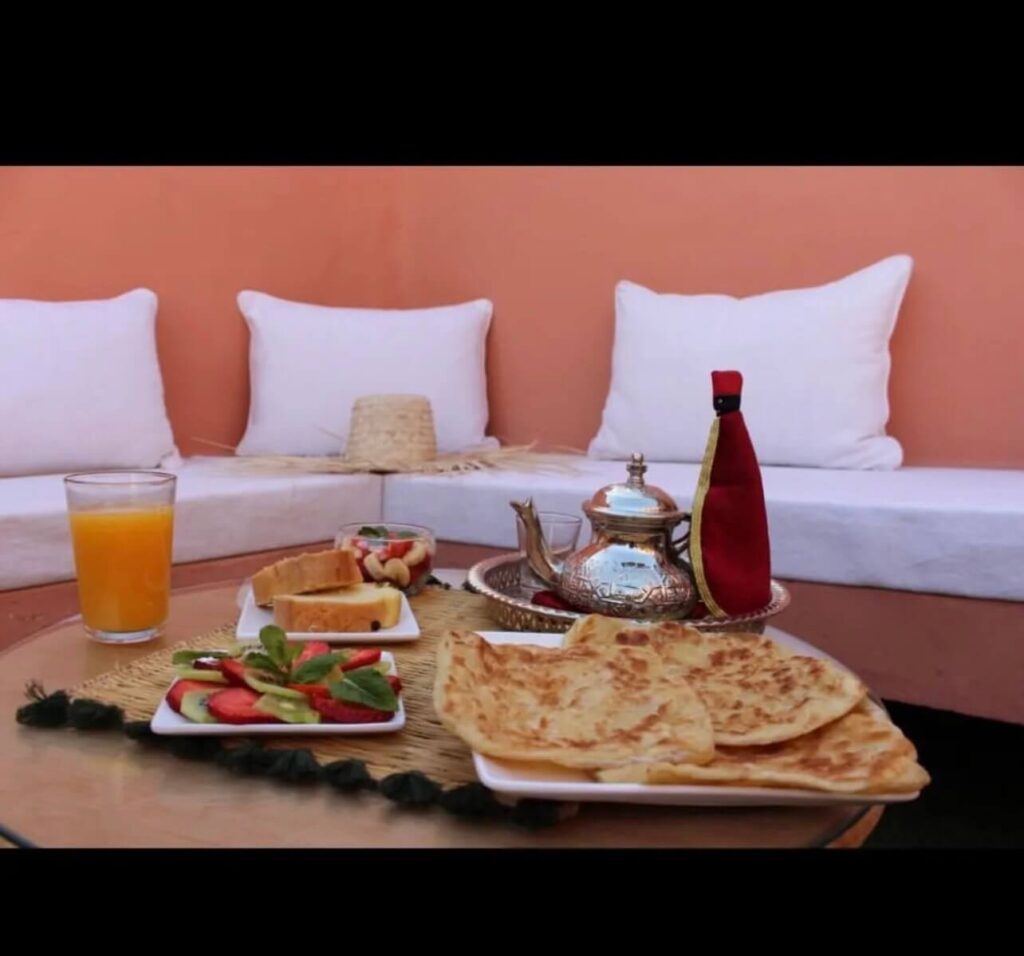
Msemen are Moroccan square-shaped pancakes or flatbread. Shaping and kneading the dough is both space, time and butter-consuming. But when done right, it isn’t one bit oily but multi-layered and crispy. Fried msemen is called Rghif which is yet another delicious treat.
Sfenj
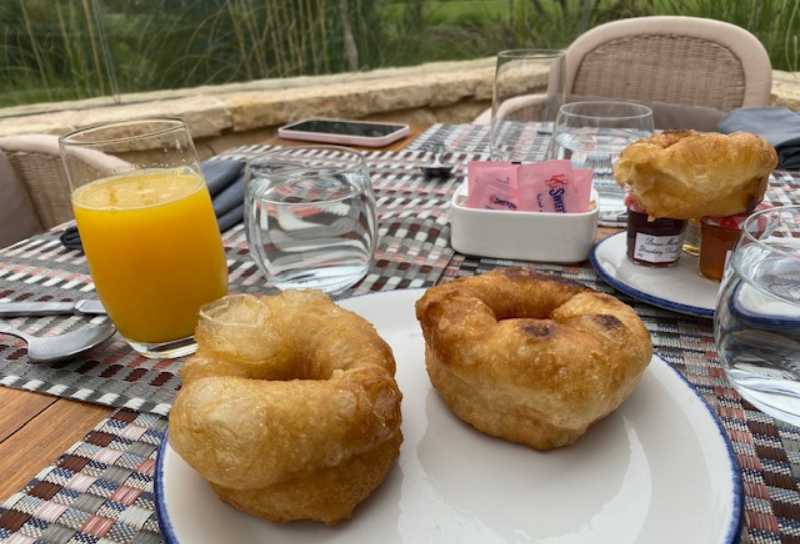
Sfenj are oil-fried doughnuts that are crispy on the outside and spongy and chewy on the inside. While Sfenj is unsweetened, a sister version thereof called beignet is sugar-coated.
Moroccan Sweet Culture
Sharing with friends and family
Moroccans’ much-celebrated hospitality, friendliness and warmth flow into the country’s food culture.
As the old saying goes, sharing is caring and the Moroccan food culture surely encapsulates this. Eating collectively is an inherited and valued practice in Morocco.
This is backed up by their belief in ‘al baraka’; or God’s blessings of one’s possessions.
The more one gives or shares out of kindness, the more blessings they receive. In this case, the action of genuinely inviting, feeding and eating with people is believed to render the food sufficient and multiply it in the future.
This interrelation between their conduct and prosperity is what truly encourages Moroccans to go over and beyond to share food with their loved ones.
Moroccan mint tea
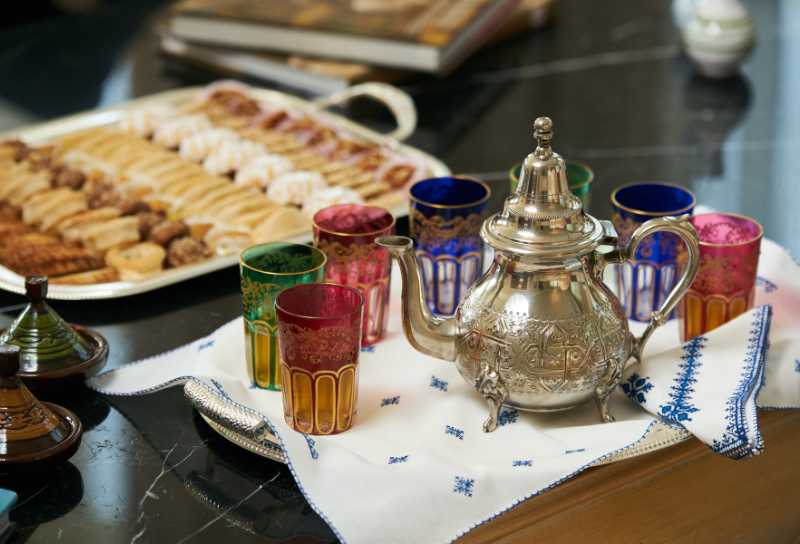
While Moroccan cookies and pastries are sold in Moroccan bakeries all year long, we mostly associate them with social gatherings, joyous events and Islamic holidays.
On such occasions, platters of cookies and pastries are customarily served alongside the much-adored Attay or Moroccan mint tea.
Moroccan tea uses green tea as a base, with Naanaa mint (spearmint) and sugar.
When Moroccans want a change from the delicately herbaceous and sweet flavor of this mint, they opt for the pungent, mentholated and bitter Chiba or leaves of the wormwood tree.
To this, verbena is often added for relaxation, flower petals for a fruitier taste and orange blossom for more citrusy notes.
Due to the association of cookies and tea with festive moments, the combo is more than a stomach filler, it’s a social binder; an opportunity for people to experience a state of togetherness as they chatter and guffaw.
Related Post: Moroccan Tea Culture
Supporting local businesses
If you’re looking to purchase Moroccan cookies, sweets or pastries, look no further.
It is small neighborhood bakeries and pastry shops that sell the most authentic and freshest ones. Most of these businesses are family run.
They sometimes have a passed-down recipe that sets them apart from others and are full of passion and pride for their practice. For this reason, shopping at one of them directly helps preserve traditional culinary practices and supports the local community.
Cost and packaging
The price of Moroccan pastries, sweets and cookies varies depending on the ingredients therein. Naturally, flour-based shortbread-based cookies are less expensive than peanut-based cookies. Almond treats exceed the two in cost.
In general, Moroccan sweets are reasonably priced and can be purchased in bulk for personal consumption.
Moroccan sweets cookies and pastries alike make up the perfect gift, in which case, there is no need for extra packaging since the vendors always prettily and meticulously wrap them in trays and boxes ensuring they travel well and stay fresh and presentable.
If you’re worried that what you buy might not be to your taste, no worries, sellers often offer free samples to first-time customers.
Conclusion
The sweet world of Morocco is vaster than any article can capture. These are more delights that we highly urge you to try on your next trip to Morocco:
Piped biscuits, Baklava, Kunafa, crescent cookies, meskouta cake, mixed nuts tweesat, chocolate k’aab cookies, sellou; cheese cookies, date cookies, stuffed ma’amul dates, ghoriba mlewza, semolina cookies, sable prestige.